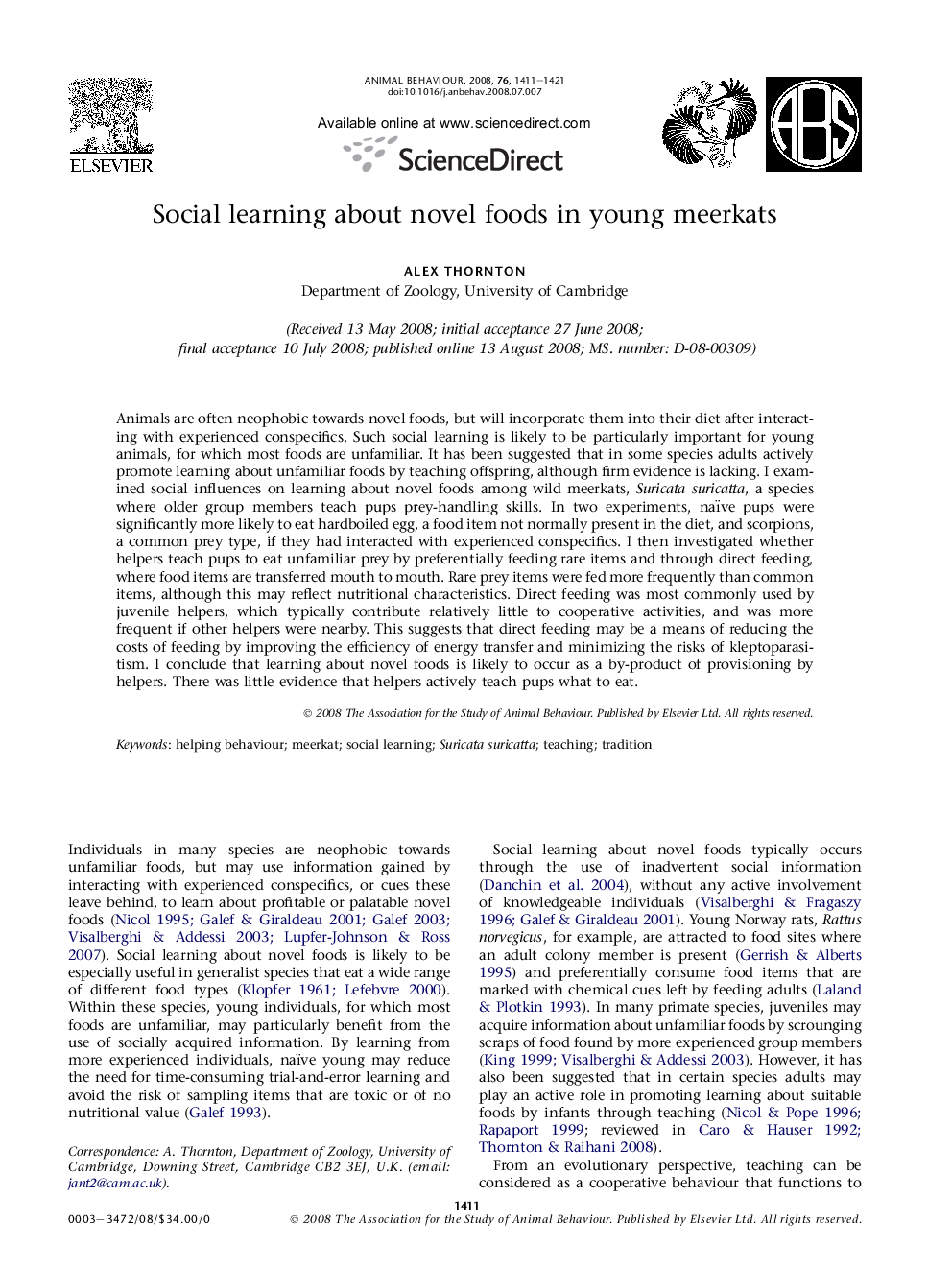| کد مقاله | کد نشریه | سال انتشار | مقاله انگلیسی | نسخه تمام متن |
|---|---|---|---|---|
| 2418780 | 1104356 | 2008 | 11 صفحه PDF | دانلود رایگان |

Animals are often neophobic towards novel foods, but will incorporate them into their diet after interacting with experienced conspecifics. Such social learning is likely to be particularly important for young animals, for which most foods are unfamiliar. It has been suggested that in some species adults actively promote learning about unfamiliar foods by teaching offspring, although firm evidence is lacking. I examined social influences on learning about novel foods among wild meerkats, Suricata suricatta, a species where older group members teach pups prey-handling skills. In two experiments, naïve pups were significantly more likely to eat hardboiled egg, a food item not normally present in the diet, and scorpions, a common prey type, if they had interacted with experienced conspecifics. I then investigated whether helpers teach pups to eat unfamiliar prey by preferentially feeding rare items and through direct feeding, where food items are transferred mouth to mouth. Rare prey items were fed more frequently than common items, although this may reflect nutritional characteristics. Direct feeding was most commonly used by juvenile helpers, which typically contribute relatively little to cooperative activities, and was more frequent if other helpers were nearby. This suggests that direct feeding may be a means of reducing the costs of feeding by improving the efficiency of energy transfer and minimizing the risks of kleptoparasitism. I conclude that learning about novel foods is likely to occur as a by-product of provisioning by helpers. There was little evidence that helpers actively teach pups what to eat.
Journal: Animal Behaviour - Volume 76, Issue 4, October 2008, Pages 1411–1421